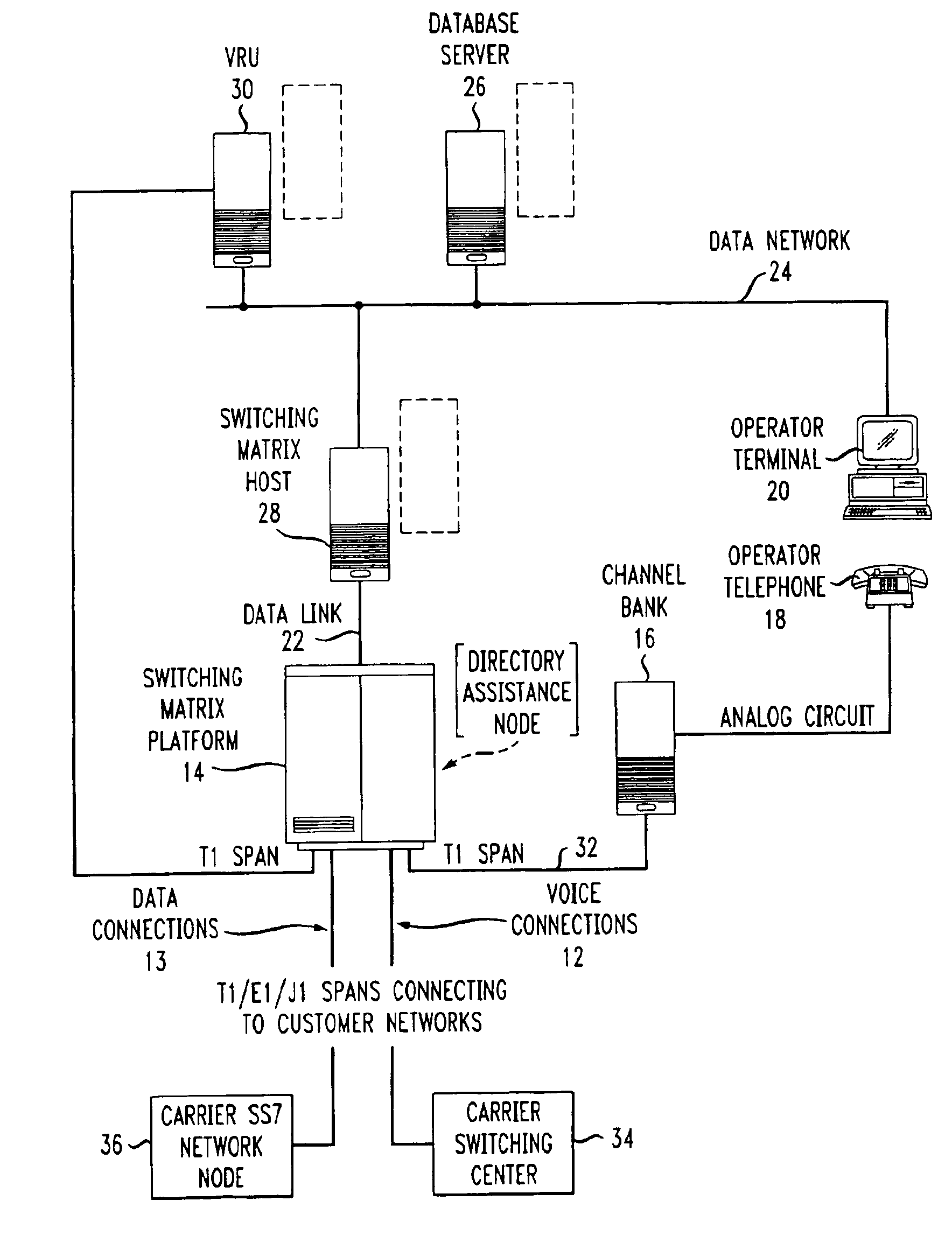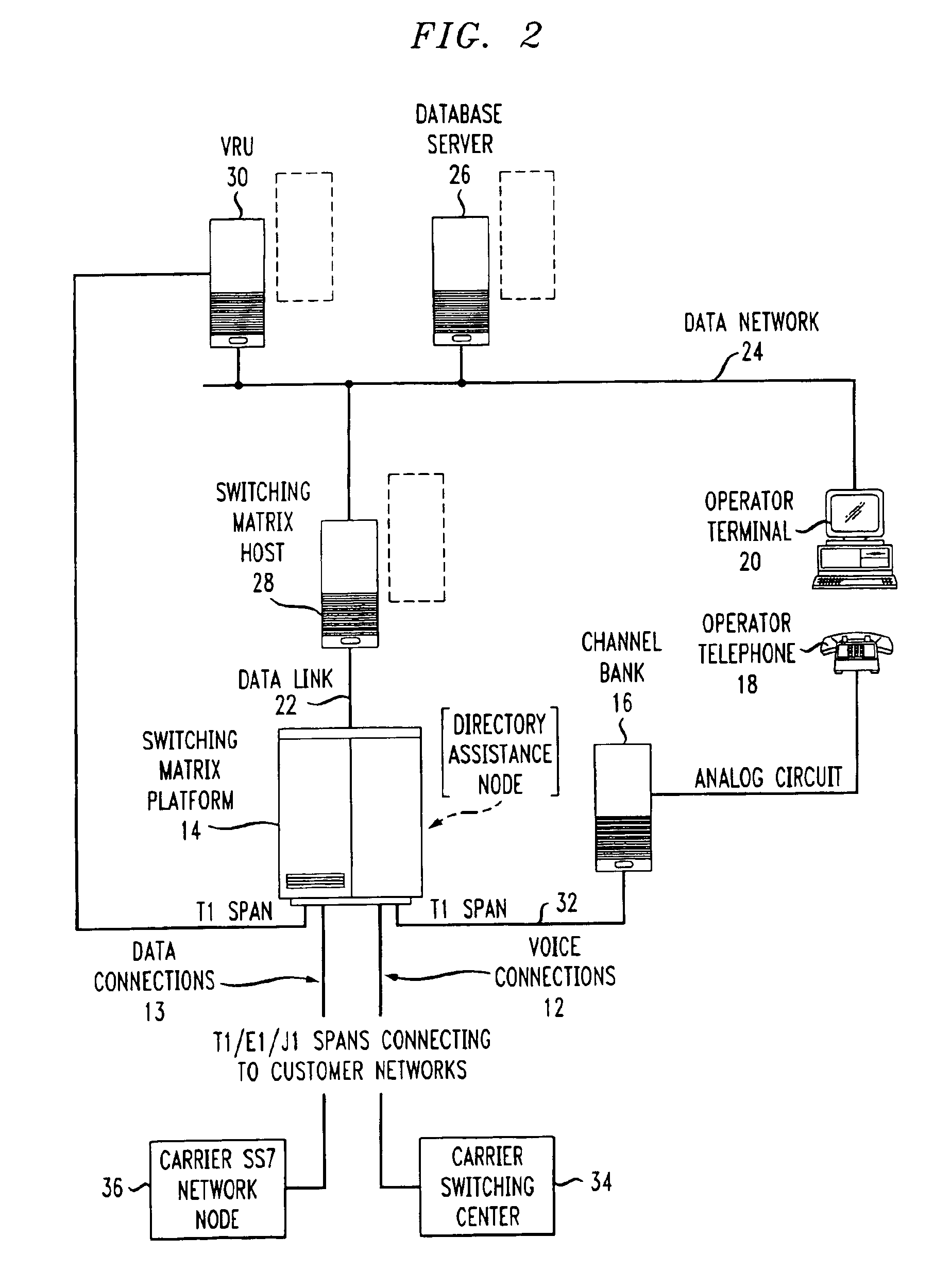Method for providing enhanced directory assistance upon command using out-of-band signaling
a technology of out-of-band signaling and directory assistance, which is applied in the direction of semi-automatic systems, special services for subscribers, interconnection arrangements, etc., can solve the problems of not having ready access to pencils and paper, system is still poorly suited to wireless telephone subscribers, and many wireless telephone customers have ill-suited arrangements. , to achieve the effect of improving reliability, faster call processing, and more efficient call processing
- Summary
- Abstract
- Description
- Claims
- Application Information
AI Technical Summary
Benefits of technology
Problems solved by technology
Method used
Image
Examples
Embodiment Construction
[0029]The present invention contemplates a directory assistance center operating in conjunction with a SS7 network. Turning to FIG. 1a, a SS7 network by functional component is shown. A SS7 network is composed of a plurality of service switch points (SSP), signal transfer points (STP) and signal control points (SCP). An SSP is generally a telecommunications switch, access tandem or end office which can interact with the SS7 network for data base services. For purposes of the present invention, the SS7 network node of the directory assistance center disclosed herein operates as an SSP.
[0030]SSPs send signaling messages to other SSPs to setup, manage, and release voice circuits required to complete a call. An SSP may also send a query message to an SCP, which is a centralized database typically containing a routing table, to determine how to route a call. Network traffic between SSPs is typically routed via a STP (a packet switch or router). An STP routes each incoming message to an o...
PUM
 Login to View More
Login to View More Abstract
Description
Claims
Application Information
 Login to View More
Login to View More - R&D
- Intellectual Property
- Life Sciences
- Materials
- Tech Scout
- Unparalleled Data Quality
- Higher Quality Content
- 60% Fewer Hallucinations
Browse by: Latest US Patents, China's latest patents, Technical Efficacy Thesaurus, Application Domain, Technology Topic, Popular Technical Reports.
© 2025 PatSnap. All rights reserved.Legal|Privacy policy|Modern Slavery Act Transparency Statement|Sitemap|About US| Contact US: help@patsnap.com



